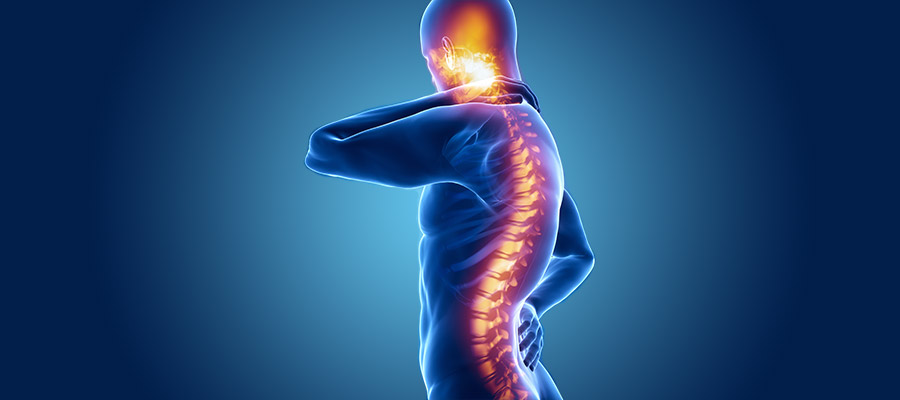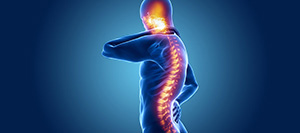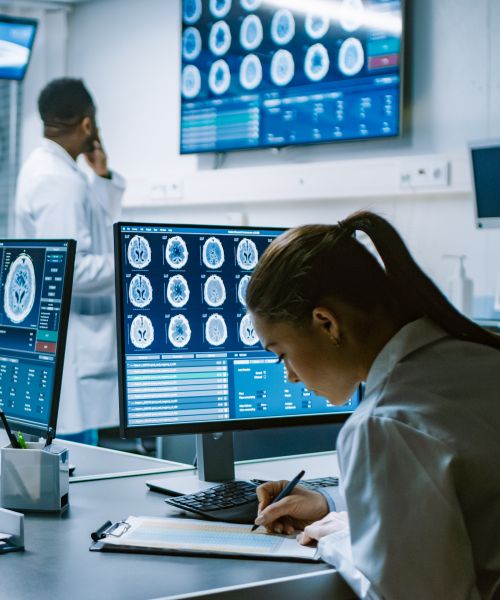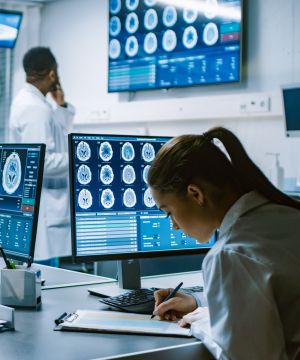Diagnostic Imaging Specialist for Spine Injuries in Work and Sports Serving Los Angeles, CA
To determine the type and extent of damage to the spine, diagnostic imaging tests are essential. Regardless of how they seem, spinal injuries should always be closely watched, and a correct diagnosis is critical owing to the possibility of significant and degenerative underlying disorders. At the iVIE MRI Screening Center, Dr. Kourosh Naini and our team of experienced professionals provide spine injury diagnosis. For more information, contact us or book an appointment online. We are located at 11600 Washington Pl Suite 104A, Culver City, CA 90066.


Table of Contents:
What are the signs indicating your spine injury is serious?
What are the diagnostic tests for spinal injuries?
What are the 4 types of spinal injuries?
How do you diagnose a spinal nerve injury?
The severity of a spinal injury can vary, and certain symptoms act as warning signs indicating the need for immediate medical attention. Regardless of the presentation, spinal injuries should always be carefully monitored, and a proper diagnosis is crucial due to the potential for serious and degenerative underlying conditions.
Since the spinal cord connects the brain to the body’s nerves, any damage to it or the surrounding tissues and blood vessels can significantly impact sensation and movement. Common signs indicating a serious spinal injury include traveling pain to the hips, buttocks, legs, and feet, as the spine uses other body parts to indicate a malfunction. This type of pain can be linked to conditions like a bulging disc.
Numbness and tingling in the arm or hand, often accompanied by muscle weakness, spasms, or loss of coordination, indicate nerve damage or compression in the spine. Tenderness and inflammation, particularly around the neck and lower back, suggest aggravation in the spine’s components.
Spinal injuries can result from various causes, including traumatic events like car accidents, sports injuries, or falls, as well as health conditions like cancer, multiple sclerosis, osteoporosis, or different forms of arthritis.
Diagnostic tests for spinal injuries are crucial to assess the extent and nature of the damage. These tests include MRIs, X-rays, CT scans, and additional diagnostic testing. X-rays reveal damage to the vertebrae and the bones surrounding the spinal cord and can also detect tumors, fractures, or spinal changes.
CT scans provide clearer and more detailed images compared to X-rays and can define bone, disk, and other structural changes. MRI is particularly helpful for examining the spinal cord and identifying herniated disks, blood clots, or masses compressing the spinal cord. These imaging tests, coupled with a physical examination and a review of the patient’s medical history, form the basis for diagnosing spinal injuries.
The specialists at iVIE will conduct a series of advanced imaging tests as necessary in the course of their diagnosis.
There are four main types of spinal injuries, categorized based on the affected region of the spine: cervical, thoracic, lumbar, and sacral. Cervical spinal injuries in the neck can cause symptoms like neck or arm pain, weakness, coordination loss, muscle spasms, and reduced muscle tone in the arms. Thoracic spinal injuries, involving the mid-back area, can lead to pain in the upper chest and mid-back, sometimes affecting the abdomen. Lumbar spinal injuries in the lower back can affect the hips and legs, potentially necessitating the use of a wheelchair or leg braces.
Sacral spinal injuries, located in the pelvic area, can cause symptoms like loss of bladder or bowel control, low back pain, and sensory issues in the groin or buttocks. The severity and impact of these injuries vary, with some potentially leading to paralysis or other significant impairments.
Diagnosing a spinal nerve injury involves a comprehensive approach, including imaging tests, physical examinations, and sensory and motor function assessments. Imaging tests like X-rays, CT scans, and MRIs are critical in visualizing the spine’s structure and identifying any abnormalities.
A thorough neurological exam is conducted to assess sensory functions and motor functions. Reflex tests also help determine the extent of nerve damage. These assessments help pinpoint the specific area of the spine affected, whether it be the cervical, thoracic, lumbar, or sacral region.
In addition to these diagnostic methods, doctors consider the patient’s medical history, the nature of the injury, and any symptoms experienced. For instance, a spinal cord injury due to trauma will prompt immediate imaging tests to assess the damage.
The combination of these diagnostic tools and clinical evaluations enables healthcare providers to develop an effective treatment plan tailored to the individual’s needs, whether it involves surgery, physical therapy, or other interventions. The goal is to manage symptoms, prevent complications, and enhance the patient’s quality of life post-injury.
Spine injury diagnosis is available at the iVIE MRI Screening Center. For more information, contact us or book an appointment online. We are located at 11600 Washington Pl Suite 104A, Culver City, CA 90066. We serve patients from Culver City Los Angeles CA, Downtown LA, Beverly Hills CA, Marina del Rey CA, Venice CA, Santa Monica CA, and surrounding areas.


Additional Services You May Need
▸ Dementia Screening
▸ Aneurysm Screening
▸ Spine MRI
▸ Whole Body MRI Screening
▸ MRI Brain Screening
▸ Brain PET
▸ Work/Sport Spine Injury Diagnosis
▸ Work/Sport Brain Injury Diagnosis
▸ Whole Body PET For Cancer
▸ MRA Brain Screening


